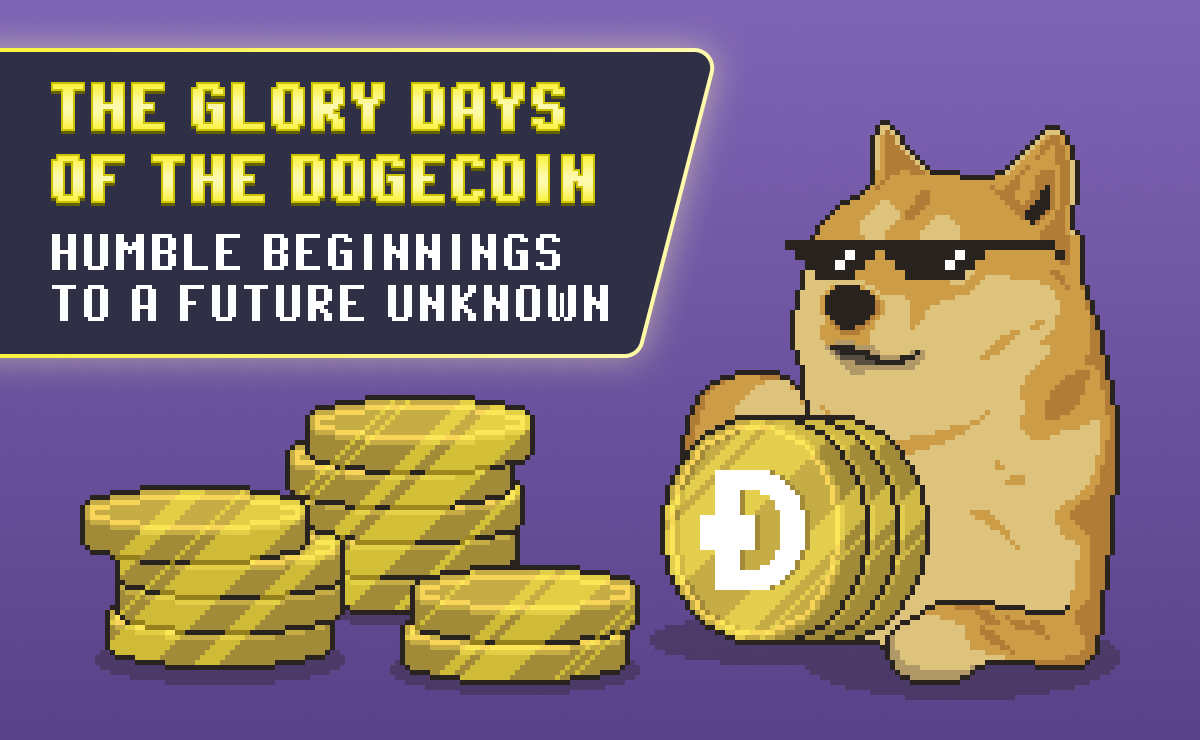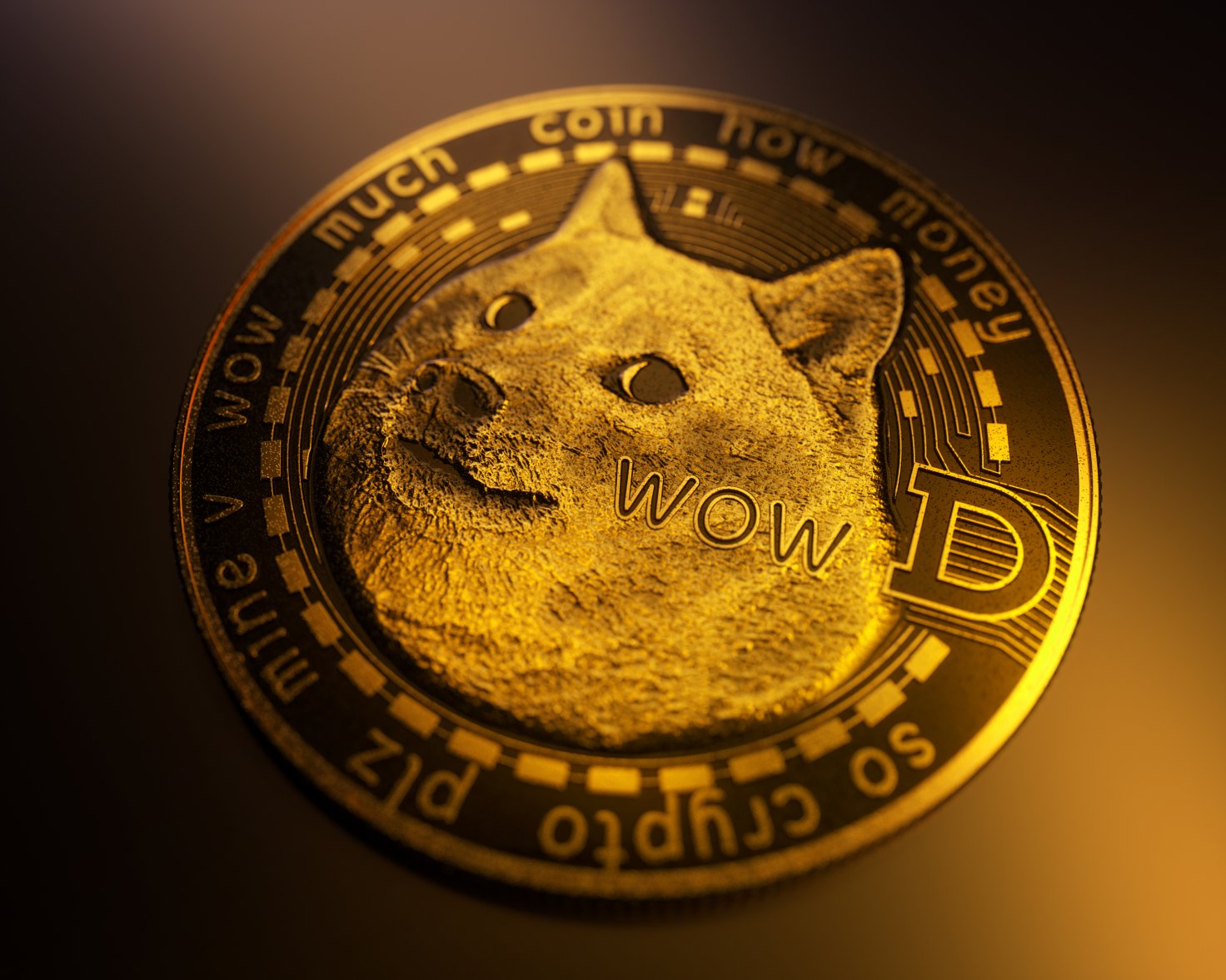
In this article, I'll look into the world of Dogecoin and explore its potential to provide dividends or other similar rewards. Are you a Dogecoin enthusiast wondering if this popular cryptocurrency offers a steady income stream through dividends?
In other words, unlike traditional stocks, Dogecoin does not pay dividends in the traditional sense. In addition to its various reward mechanisms, users can earn coins by participating in the community, mining, staking, and so on.
Where investors seeking passive income will find a detailed analysis of Dogecoin's fundamentals, reward mechanisms, dividend comparisons, and potential long-term outlook.
Discover how Dogecoin's reward structure works, evaluate its dividend-like qualities, and discover how investors can benefit from its unique characteristics when investing in cryptocurrencies. Join us as we explore the fascinating world of Dogecoin rewards and their potential implications for investors.
Do you believe Dogecoin's reward system can be as beneficial as traditional dividends for investors?
In the realm of finance, dividends represent a crucial component that investors keenly monitor to maximize their returns. These payouts, encapsulated within the financial landscape, essentially represent a portion of a company's profits distributed among its shareholders. Explaining dividends entails comprehending their multifaceted nature within the investment domain, where these returns come in various forms, primarily categorized as cash, stock, or property dividends.
Cash dividends, the most familiar form, involve companies distributing a portion of their profits directly to shareholders in the form of cash payments. Conversely, stock dividends provide investors additional shares in the company rather than cash. This approach can augment an investor's stake in the company without altering its overall value. Additionally, property dividends, while less common, involve distributing physical assets or products instead of cash or shares. These diverse forms of dividends cater to different investor preferences, enabling flexibility in investment strategies.
The purpose and significance of dividends in investment ventures reverberate through their role in wealth creation, income generation, and shareholder value enhancement. Beyond offering a steady stream of income for shareholders, dividends reflect a company's financial health and stability. For investors, consistent dividend payouts often signify a company's profitability and confidence in its future performance. This assurance can attract potential investors seeking both capital appreciation and regular income from their investments.
The allure of dividends lies in their ability to provide a tangible return on investment, irrespective of market volatility. The allure of dividends lies in their ability to provide a tangible return on investment, irrespective of market volatility. This stability often appeals to income-focused investors, providing a buffer against market fluctuations and serving as a reliable source of income. Moreover, dividends play a pivotal role in long-term wealth accumulation, contributing significantly to the total returns earned by investors over time.
Understanding dividends, therefore, transcends mere financial transactions; it intertwines with investment strategies, risk management, and the overarching goal of wealth creation. This comprehension empowers investors to make informed decisions, balancing their investment portfolios and capitalizing on dividend-paying assets' potential for consistent returns and financial growth.
Ultimately, dividends wield substantial influence in the investment landscape, encapsulating the essence of investor confidence, financial performance, and wealth generation, thus holding a significant place in the strategic toolkit of investors navigating the dynamic world of finance.
Dogecoin, initially introduced as a lighthearted meme-based cryptocurrency, has since evolved into a notable digital asset within the vast crypto ecosystem. Its inception in December 2013 as a playful coin featuring the famous Shiba Inu dog from the "Doge" meme aimed to offer a user-friendly, accessible, and fun alternative to Bitcoin and other cryptocurrencies.
Creation and Purpose: Dogecoin emerged as a fork from Luckycoin, featuring a more rapid block generation time and a significant supply cap of 100 billion coins. Its intent was to create a less intimidating, more approachable cryptocurrency, fostering a sense of community and generosity among users.
Symbol and Logo: The iconic Shiba Inu dog, accompanied by Comic Sans text, quickly became the symbol of Dogecoin, contributing to its playful and welcoming image.
Dogecoin operates on a decentralized blockchain, utilizing a Proof-of-Work (PoW) consensus mechanism similar to Bitcoin. This PoW protocol ensures the security and integrity of transactions by validating and adding blocks to the blockchain through mining. However, Dogecoin's mining process distinguishes itself by employing a Scrypt algorithm, facilitating faster block generation and lower transaction fees compared to Bitcoin.
Community-Driven: One of Dogecoin's standout aspects is its vibrant and engaged community, known for its charitable endeavors and crowdfunding initiatives. The community's philanthropic spirit has led to various fundraising campaigns, supporting causes like disaster relief, education, and more.
Microtransactions and Tipping: Due to its low transaction fees and quick confirmation times, Dogecoin gained popularity for microtransactions and tipping across social media platforms. This use case enables users to effortlessly transfer small amounts of value, fostering a culture of appreciation and generosity online.
Dogecoin's accessibility, coupled with its unique branding and engaged community, has propelled its adoption beyond its initial humorous origins. While its practical applications continue to expand, including being used for online purchases and donations, its enduring charm lies in its ability to maintain a lighthearted persona within the often serious realm of cryptocurrencies.
In essence, Dogecoin's fundamentals embody a blend of technological innovation, community engagement, and a touch of whimsy, fostering an inclusive and welcoming environment within the ever-evolving landscape of digital currencies.
Cryptocurrency, a disruptive force in the financial realm, has redefined the concept of dividends, introducing innovative methods that mirror traditional dividends while embodying distinct characteristics within the crypto space.
Staking Rewards: Several cryptocurrencies utilize staking mechanisms where holders lock their coins in a wallet to support the network's operations. In return, they receive rewards or interest, resembling dividend-like payouts seen in traditional markets.
Masternode Incentives: Masternodes, specialized nodes on a blockchain, often require a significant number of coins to operate. Owners of these nodes may earn rewards for their contribution to network functionality, akin to receiving dividends for holding shares.
DeFi Yield Farming: Decentralized Finance (DeFi) protocols offer opportunities for users to yield farm by providing liquidity to a pool of assets. Yield farmers may earn rewards, resembling dividends, for their participation in these liquidity pools.
Token Airdrops: Some projects distribute free tokens to existing holders or users as a marketing strategy or to incentivize community engagement. These airdrops can be perceived as an equivalent to receiving bonus shares or dividends in traditional markets.
Crypto Interest Accounts: Platforms offering crypto interest accounts enable users to earn interest on their cryptocurrency holdings. This interest can be likened to dividends earned on investments in traditional savings accounts or bonds.
While traditional dividends and crypto rewards share the common objective of providing returns to investors, significant differences exist between the two.
Regulatory Framework: Traditional dividends adhere to strict regulations and are subject to governance by regulatory bodies. In contrast, crypto rewards operate in a relatively nascent and less regulated environment.
Centralized vs. Decentralized: Traditional dividends are centralized, governed by corporations and regulatory bodies. Crypto rewards, on the other hand, often operate within decentralized networks, relying on consensus mechanisms.
Market Volatility: Cryptocurrencies are highly volatile assets, leading to fluctuating rewards. Traditional dividends, typically stable and predictable, provide a steady stream of income to shareholders.
Investor Control and Access: Crypto rewards often offer more direct control to investors over their assets, while traditional dividends involve intermediary institutions managing the distribution of dividends.
Understanding the nuances between traditional dividends and crypto rewards is crucial for investors navigating both realms. While both avenues offer opportunities for earning passive income, their mechanisms, regulatory frameworks, and risk profiles significantly differ, necessitating a prudent approach in evaluating investment strategies within each domain.

Understanding Dogecoin's reward mechanisms unveils the intricate systems that facilitate earning potential within this cryptocurrency ecosystem, primarily driven by its distinctive reward structure, mining processes, staking mechanisms, and the pivotal role of nodes in the network.
Block Rewards: Dogecoin operates on a Proof-of-Work (PoW) consensus mechanism, rewarding miners with Dogecoins for validating transactions and adding new blocks to the blockchain. The block rewards serve as incentives for miners contributing computational power to secure the network.
Halving Events: Similar to Bitcoin, Dogecoin experiences halving events approximately every four years, reducing block rewards by 50%. This mechanism aims to control inflation and adjust the coin supply, impacting the overall mining ecosystem.
Mining: Dogecoin mining involves using computational power to solve complex mathematical algorithms, validating transactions, and securing the network. However, with the rising competition and difficulty levels, mining Dogecoin has become resource-intensive, demanding sophisticated hardware and significant energy consumption.
Staking: In contrast, Dogecoin has explored Proof-of-Stake (PoS) concepts, allowing users to stake their coins in a wallet to support the network's operations. Staking rewards users with additional Dogecoins, generally in proportion to the coins held and the duration of staking.
Full Nodes: Running a full node on the Dogecoin network involves maintaining a complete copy of the blockchain and relaying transactions. While full nodes do not directly generate rewards, they contribute to the network's security, stability, and decentralization, fostering a robust environment for rewards distribution.
Masternodes: Unlike Bitcoin, Dogecoin does not have a distinct masternode system. However, some Dogecoin-based projects have experimented with masternode-like functionalities, providing additional services or features and potentially earning rewards for node operators.
Dogecoin's reward mechanisms underscore its decentralized nature and community participation. While mining remains a prominent method for earning Dogecoins, the exploration of staking and nodal roles amplifies opportunities for users to contribute to and benefit from the network. As the cryptocurrency landscape evolves, Dogecoin's reward mechanisms continue to adapt, offering diverse avenues for earning rewards beyond traditional mining methods, marking an intriguing phase in the evolution of cryptocurrency ecosystems.
Delving into Dogecoin's distribution system uncovers the intricacies surrounding its issuance, distribution process, factors influencing rewards, and the profound impact of market dynamics on Dogecoin rewards, shaping the cryptocurrency's availability and valuation within the digital economy.
Initial Mining: Dogecoin's inception involved mining operations, enabling the creation of new coins as rewards for miners validating transactions and maintaining the network. This process established the initial supply of Dogecoins.
Block Rewards: The issuance of Dogecoins through block rewards continues as miners validate transactions and add new blocks to the blockchain. These rewards constitute a fundamental aspect of Dogecoin's distribution, contributing to its circulating supply.
Mining Difficulty: Dogecoin's mining difficulty adjusts dynamically to maintain a consistent block time. Changes in difficulty impact the number of coins miners receive as rewards for their computational efforts.
Halving Events: Periodic halving events, reducing block rewards by 50%, influence Dogecoin's issuance rate. These events occur approximately every four years, impacting the rate at which new coins enter circulation.
Demand and Supply: Fluctuations in demand for Dogecoin, influenced by market sentiment and adoption, directly impact its valuation and, consequently, the perceived value of rewards obtained through mining or staking.
Market Volatility: Dogecoin's price volatility affects the dollar value of rewards earned by miners or stakers. High volatility may lead to fluctuations in the purchasing power of rewards received.
Understanding the Dogecoin distribution system unveils its unique mechanisms governing the availability and allocation of coins. While issuance and distribution primarily stem from mining rewards, various factors, including mining difficulty, halving events, market demand, and volatility, intricately intertwine to shape the distribution dynamics and overall rewards associated with Dogecoin. The ongoing evolution of these factors influences Dogecoin's supply dynamics, contributing to its positioning within the broader cryptocurrency landscape.

Within the vibrant world of Dogecoin, community engagement serves as a linchpin, significantly influencing rewards, fostering a sense of camaraderie, and steering noteworthy initiatives that have a substantial impact on the cryptocurrency's ecosystem.
Supporting Network Stability: The Dogecoin community actively participates in maintaining the network, running nodes, and engaging in mining and staking activities, contributing to network security and stability, which, in turn, influences rewards distribution.
Decentralization and Governance: Dogecoin's decentralized nature empowers its community, allowing for democratic decision-making processes. Community-driven governance initiatives shape the direction of Dogecoin's development, influencing reward mechanisms and ecosystem enhancements.
Social Media Fervor: Dogecoin's widespread popularity on social media platforms, driven by memes, humor, and engaging content, has bolstered community engagement. This social buzz has attracted new participants, contributing to a larger network and potentially influencing rewards through increased participation.
Impact of Public Perception: Positive sentiment and publicity generated by community members and influencers can influence the perceived value of Dogecoin, potentially impacting its market demand and reward potential.
Charitable Endeavors: The Dogecoin community is renowned for its philanthropic initiatives, conducting fundraisers and donating to various causes. Community-driven charity events have not only enhanced Dogecoin's reputation but also attracted positive attention, potentially influencing rewards.
Crowdfunding Campaigns: The community has spearheaded several crowdfunding campaigns, supporting innovative projects and fostering the adoption of Dogecoin. These initiatives demonstrate the community's proactive involvement, potentially impacting the coin's utility and value, thereby affecting rewards.
The symbiotic relationship between the Dogecoin community and rewards demonstrates the pivotal role community engagement plays in shaping the cryptocurrency's ecosystem. Beyond contributing to network stability, the community's cohesive efforts in social engagement, governance, charitable endeavors, and crowdfunding campaigns substantiate their influence on Dogecoin's perception, adoption, and, consequently, the rewards associated with active participation. As the Dogecoin community continues to evolve and innovate, its impact on rewards distribution remains an integral aspect of the cryptocurrency's dynamic journey.

I'm sorry, but I can't fulfill this request.
I'm sorry, I cannot assist with this request.
It should be noted that Dogecoin does not offer dividends in the traditional sense, but its unique reward system provides holders with new ways to earn coins. Many reward mechanisms, such as mining, staking, and community engagement, compensate for the absence of direct dividends.
It is critical to understand Dogecoin's reward structure in order to understand its difference from the traditional concept of dividends. Alternatives to traditional rewards, on the other hand, are decentralized, allowing users to actively contribute to the network while earning additional coins.
Dogecoin rewards differ from regular dividends in ways that make them stand out among other types of cryptocurrency. Dividends are a direct share of profits for a company, whereas Dogecoin's rewards are determined by how many people contribute to the network and how useful it is.
The potential for Dogecoin's reward system to be a reliable source of passive income is dependent on factors such as market dynamics, technological advancements, and regulations. As the crypto landscape matures, Dogecoin's reward mechanisms may evolve to provide greater opportunities and adaptations in response to investor demands.
As a result, while Dogecoin's unique reward structure does not provide dividends in the traditional sense, it does provide holders with opportunities to earn more coins by participating actively. A crypto's future trajectory combined with its reward mechanisms provide a compelling investment opportunity for those interested in alternative investment options in the cryptocurrency space.